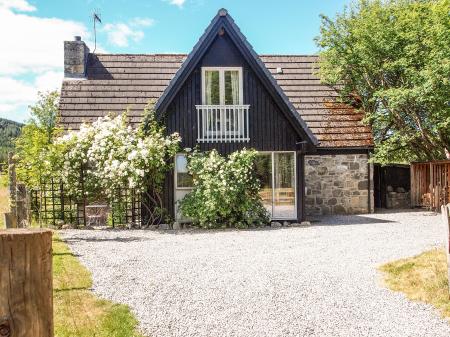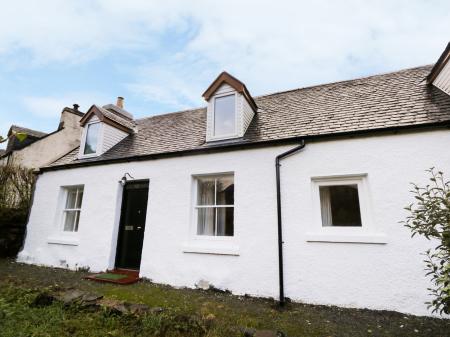
Like so many kings and queens of medieval Scotland, Mary was a child when she came to the throne. Mary was only a week old when she was proclaimed queen in December 1542 after the death of her father, James V. This would normally be cause for the country to be ruled by a regent.
This time, however, the choice of regent came not from within Scotland, but from England. For at James's death the English king, Henry VIII saw his chance to finally take control of Scotland. Henry arranged a marriage between his son Edward, and the infant Mary, to take place when Mary reached 11 years old.
Henry sent the Earl of Angus back to Scotland from his English exile, and with him went James Hamilton, Earl of Arran. Hamilton, a firm Protestant, became Guardian of the Realm. This Protestant influence prompted Cardinal Beaton, Archbishop of St Andrews, to protest at the dual threat to Scottish religion and national identity. He called for closer ties with staunchly Catholic France. Henry responded by throwing Beaton in prison.
Beaton escaped and joined forces with Guardian Hamilton. Henry exacted swift revenge. He sent ships under the Earl of Hertford to take Edinburgh, and the city was burned, along with Holyrood Palace. Hertford's army then cut a swath of destruction across the south, sacking the abbeys of Kelso, Jedburgh, Melrose, and Dryburgh, and destroying over 200 villages. The dreadful destruction wreaked by the English helped polarize Scottish opinion on religious lines; the Catholic Queen Mother and her supporters associated Scottish Protestants with the actions of the English Protestants. Many Scottish Protestants were burned at the stake, causing a great many to flee south to England for safety. A great period of religious turmoil began; Beaton put to death leading Protestants, and was himself put to death.
Henry VIII died, and the Earl of Hertford, now known as the Protector, Duke of Somerset, marched north to make Scotland Protestant and seize the young queen. He met the Scottish regent, Hamilton, in battle at Pinkie. The Scots were destroyed, and Somerset installed English garrisons at captured Scottish castles throughout the south.
The Scots turned to France. Mary of Guise arranged a marriage between Princess Mary, now 5, and Francis, the French dauphin. Mary was sent to be brought up at the French court. Mary married Francis in 1558 but the unfortunate dauphin was not fated to live long. Not long afterwards, the English Queen Mary died. Mary Stewart's advisors claimed the English throne on her behalf, but Mary Tudor's sister Elizabeth was crowned queen of England as Elizabeth I. Elizabeth I sent aid to Scottish Protestants, who were subject to severe measures by Mary of Guise and her advisors. The Queen Mother used French troops to suppress growing Protestant unrest. But Mary of Guise then died, and on 19 August 1561, the young Queen Mary returned to Scotland to take power on her own behalf.
Though Mary promised to leave the new Protestant Church of Scotland to carry on without interference, many Scottish Protestants distrusted the new queen. John Knox, never shy about voicing his opinions, preached against the Catholic queen. Mary helped alleviate some Protestant fears by naming two Protestants as her chief advisors. She put down a rebellion by the Earl of Huntly, and some of her subjects, notably in the Highlands, began to warm to her. Then things began to go badly wrong, and for most of her ensuing troubles, Mary had only herself to blame.
In 1565 she married Henry, Lord Darnley, a descendant of Henry VII of England. The impetuous Darnley made many enemies, and none more so than the queen's secretary and advisor, the Catholic David Riccio. Darnley resented Riccio's influence over the queen. On 9 March 1566 Darnley and a band of friends led by the Earl of Ruthven broke into the queen's apartments at Holyroodhouse, seized Riccio, and killed him. The mystery of Darnley's deathAfter Riccio's death Mary gave birth to a son, who would eventually become James VI of Scotland and James I of England. But not long after, Darnley fell ill. Mary visited him several times at a house called Kirk o' Field, near the palace in Edinburgh. On 9 February, 1567 the house blew up. However, it appears that Darnley had already been strangled to death before the explosion. Was the queen responsible? Was the explosion an attempt on her life? Here we enter the realm of pure speculation. Unfortunately for Mary, many people believed that she had connived at her husband's murder in retaliation for his involvement in Riccio's death.

Fotheringhay Castle, Northamptonshire
One of Mary's allies was James Hepburn, Earl of Bothwell. Rumours circulated that Bothwell had killed Darnley, and the Earl was arrested but never brought to trial. Then, just 3 months after Darnley's death, Mary married Bothwell. As public relations moves go, this was an absolute shocker. Many people thought Bothwell was behind the murder, yet the queen married him very soon after her husband's death.
Public opinion, always suspicious of Mary as a Catholic, now swung violently against her. Bothwell fled abroad, only to die in prison in Denmark. Mary surrendered herself to Parliament and was imprisoned at Loch Leven Castle. She was forced to abdicate the throne in favour of her son, the infant James VI. Mary's half-brother, the Earl of Moray, was named regent. Mary escaped from Loch Leven Castle and, after an abortive attempt to gather support to regain the throne, she fled south to England and threw herself on the tender mercies of her cousin, Elizabeth I of England. Elizabeth was now in a quandary; did she help Mary and alienate her Protestant countrymen? Or did she execute Mary, as many of her advisors wished? In true Elizabethan fashion, she did neither; she kept Mary a prisoner for 19 years, moving her from one gilded prison to another. At various points during the ensuing years, Mary's supporters made attempts to hatch plots aimed at helping her regain the throne of Scotland, or even more audacious plots to put her on the English throne. Finally, in 1587, Mary was implicated in the Babington Plot, a Catholic conspiracy to put her on the English throne. Elizabeth could procrastinate no longer, and Mary was executed at Fotheringhay Castle, Northamptonshire, on 8 February.

